The ACMS has identified for the first time how many Australians have experienced multi-type maltreatment.
National prevalence of child maltreatment in Australia.
The Australian Child Maltreatment Study randomly surveyed 8503 randomly selected Australians (aged 16-65+), including an oversample of 3500, using gold standard methodology. We generated the first nationally representative rates of all five types of child maltreatment (physical abuse, sexual abuse, emotional abuse, neglect, and exposure to domestic violence) and their associated outcomes in Australia.
These findings underscore the moral and economic imperative for Australian governments to develop a coordinated long-term plan for generational reform.
Girls are at greater risk for most types of maltreatment across the whole population.
Girls experience higher rates of sexual abuse and emotional abuse than boys:
- Sexual abuse (37.3% vs 18.8%)
- Emotional abuse (35.6% vs 25.4%)
- Neglect (10.6% vs 6.7%)
Girls and boys experience comparable levels of:
- Physical abuse (31.5% vs 32.1%)
- EDV (40.8% vs 38.9%)
Child Maltreatment in Australian Young People
The Australian Child Maltreatment Study has collected the first nationally representative data on how many young people ages 16-24 years have experienced child maltreatment. This oversample allows us to track changes in prevalence rates over time to determine the impact of policy and practice initiatives to reduce maltreatment.
Among 16-24 olds:
- 28.2% experience physical abuse
- 25.7% experienced sexual abuse
- 34.6% experienced emotional abuse
- 10.3% experienced neglect
- 43.8% exposure to domestic violence (EDV)
4 in 10 (40.2%) experience >1 type of abuse

1 in 4 (25.4%) experience 3-5 types

3.7% experience all 5 types
Key differences between genders: youth aged 16-24
Girls experience much more sexual abuse and emotional abuse than boys:

Girls and boys experience comparable levels of:
Overall national prevalence of child sexual abuse in Australia
Whole sample (ages 16-65+): 28.5%
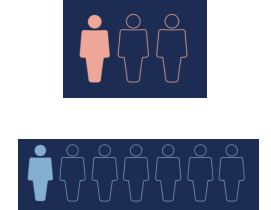
Overall breakdown by sex:
Whole sample:
- More than 1 in 3 girls experience Child Sexual Abuse.
- Almost 1 in 5 boys experience Child Sexual Abuse.
-19.19-1.png)
Massive female/male
disparity in Child Sexual Abuse
- Whole sample: girls experience double the rate of Child Sexual Abuse (37.3% vs 18.8%)
 19.21 1.png)
Severity
- Almost 1 in 4 Australians experienced one or more types of contact Child Sexual Abuse (23.70%)
- Almost 1 in 5 experienced non-contact Child Sexual Abuse (18.10%)
- Almost 1 in 10 Australians experienced forced sex in childhood (8.7%).

Chronicity: when a child experiences Child Sexual Abuse, it rarely happens only once
- For 78% of children who experienced Child Sexual Abuse, it happened more than once.
- For 42% of children who experienced Child Sexual Abuse, it happened more than 6 times.
- For 11% of children who experienced Child Sexual Abuse, it happened more than 50 times.
Prevalence of child sexual abuse among
Australian young people.
-20.10-1.png)
Overall national prevalence of child sexual abuse in Australia
- Those aged 16-24: 25.7%
-20.10-2.png)
Overall breakdown by sex:
- More than 1 in 3 girls experience CSA (35.2%)
- Almost 1 in 7 boys experience CSA (14.5%)
-20.13-1.png)
Massive female/male disparity in CSA
- Youth sample only (those aged 16-24): girls experience 2.5 times the rate of sexual abuse (35.2% vs 14.5%)
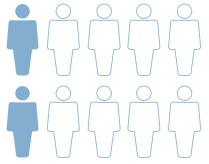
Severity
- Almost 1 in 10 Australians experienced forced sex in childhood (8.7%).
- For 11% of children who experienced CSA, it happened more than 50 times.
Reference:
Ref Mathews B, Pacella RE, Scott JG, Finkelhor D, Meinck F, Higgins DJ, Erskine HE, Thomas HJ, Lawrence D, Haslam DM, Malacova E, Dunne MP. The prevalence of child maltreatment in Australia: findings from a national survey. Med J Aust 2023; 218 (6 Suppl): S13-S18.
https://doi.org/10.5694/mja2.51873.Many Australians have experienced multiple forms of child maltreatment.
Multi-type maltreatment is when a child experience >1 different type of maltreatment. This includes some combination of physical abuse, sexual abuse, emotional abuse, neglect, exposure to domestic violence.

2/3 of children who experience maltreatment experience >1 different type.

2 in 5 Australians (39.4%) have experienced more than one type of maltreatment.
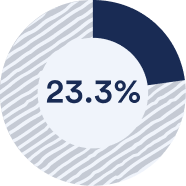
1 in 4 Australians (23.3%) experience 3-5 types.
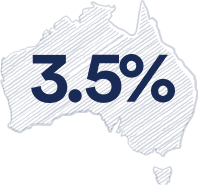
3.5% Australians have experienced all five types.
 19.07 1.png)
Girls experience more multi-type maltreatment (43.2% v 34.9%) and are almost twice as likely to experience 4 or 5 types.
 20.21 1.png)
Most children who experience multi-type maltreatment experience exposure to domestic violence.
 20.20 1.png)
Parental separation, family mental illness, family substance problems and family economic hardship DOUBLE the risk of multi-type maltreatment.
The ACMS has identified for the first time how many Australians young people aged 16-24 have experienced multi-type maltreatment.
Multi-type maltreatment is concerningly common.
4 in 10 (40.2%) of young people have experienced >1 type of abuse.

1 in 4 (25.4%) experience 3-5 types of abuse

3.7% have experienced all five types.
Girls more likely to experience:
- >1 type of maltreatment (45.6% vs 33%)
- 3-5 (30.1% vs 18.6)
- all 5 types 5.6% vs 1.4%)
Parental separation, family mental illness, family substance problems and family economic hardship DOUBLE the risk of multi-type maltreatment.
Children who experience multi-type maltreatment are more likely to have a mental disorder and health risk behaviours as adults.
Reference:
Higgins DJ, Mathews B, Pacella R, et al. The prevalence and nature of multi-type child maltreatment
in Australia
. Med J Aust 2023; 218 (6 Suppl): S19-S25.
Child maltreatment and mental health disorders.
The Australian Child Maltreatment Study team examined the associations between child maltreatment and mental health disorders using a nationally representative sample of Australians 16-65 years and older. We used the Mini International Neuropsychiatric Interview to determine if participants would meet clinically diagnostic criteria for four common mental disorders.
4 common mental disorders assessed:
- Major depressive disorder (MDD) over life
- Generalised anxiety disorder (GAD) - current
- Alcohol use disorder (AUD) - current
- Post-traumatic stress disorder (PTSD)- current




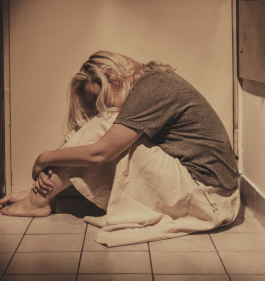
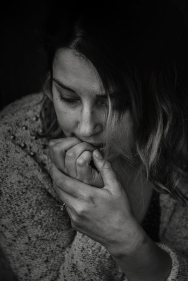
Child maltreatment is strongly associated with mental health disorders in Australia.
Children who experience maltreatment are more likely to have a mental health disorders in adulthood. Based on our full sample of Australians (16-65+) we found Australians who experienced child maltreatment were:
more likely to have any mental
disorder (48% v 21.6%)
more likely to have had major
depressive disorder (24.6% vs
8.1%)
more likely to have current
PTSD (7.80% vs 1.30%)
more likely to have severe alcohol
use disorder (6.1% vs 1.9%)
more likely to have current generalised
anxiety disorder (16.1% vs 4.3%)
Almost half of those with child maltreatment met criteria for one of the four disorders (48.0%), compared with one in five of those without child maltreatment (21.6%)
1 in 4 with child maltreatment (24.6%) had lifetime major depressive disorder (MDD)

Compared to 1 in 12 (8.1%) of those who did not experience maltreatment.
1 in 6 with CM (16.1%) had generalised anxiety disorder (GAD).

Compared to (4.3 )
Maltreatment in continues to influence the presence of “common” mental health in later life. “Common” mental are uncommon in those aged 45+ who had not experienced CM.
| Prevalence: 45+ years olds | In those with child maltreatment | In those with no child maltreatment |
|---|---|---|
| Any MH disorder | 38.3% | 16.6% |
| MDD (lifetime) | 21% | 6.1% |
| GAD (current) | 10.8% | 2.4% |
| Moderate AUD (current) | 5.2% | 1.8% |
| Severe AUD (current) | 3.5% | 1.3% |
| PTSD (current) | 6.1% | 1.1% |
Youth mental health findings.
The Australian Child Maltreatment Study team examined the associations between child maltreatment and mental health disorders. This graphic shows the connect between child maltreatment and mental health disorders in a youth sample of 16–24-year-olds. We used the Mini International Neuropsychiatric Interview to determine if participants would meet clinically diagnostic criteria for a mental disorder.
Child maltreatment is associated with dramatically increased odds of young people having a mental disorder
Youth who experienced child maltreatment are
any mental disorder.
anxiety disorder.
have PTSD.
major depressive disorder.
alcohol use disorder.
Reference:
Scott JG, Malacova E, Mathews B, et al. The association between child maltreatment and mental disorders in the Australian Child Maltreatment Study. Med J Aust 2023; 218 (6 Suppl): S26-S33.
Health risk behavior findings

The Australian Child Maltreatment study examined the association between maltreatment in childhood and current health risk behaviours. Child maltreatment is associated with significantly increased odds of all health risk behaviours.
People who have experienced child maltreatment are significantly more:
- 6.2 times more likely to be cannabis dependent.
- 4.5x more likely to have attempted suicide in the past 12 months.
- 3.9x more likely to have self-harmed in last 12 months
- 1.8x more likely to be a current smoker
- 1.3x more likely binge drink at least weekly
- 1.2x more likely to have obesity
This is after adjustment for other explanatory factors.

Child maltreatment dramatically increases the likelihood of three serious health risk behaviours: cannabis dependence, self-harm, and suicide attempt.
| Prevalence: | Whole sample | With child maltreatment | With no child maltreatment |
|---|---|---|---|
| Cannabis dependence | 2.5% | 3.7% | 0.5% |
| Self-harm (prior year) | 3.2% | 4.7% | 0.7% |
| Suicide attempt (prior year) | 1.1% | 1.5% | 0.3% |
Sexual abuse, emotional abuse and multi-type child maltreatment
are most strongly associated with these major adverse outcomes.
Associated harm continues over life.
By middle age (45 years plus) cannabis dependence, self-harm, and suicide attempts) were too rare to be detected in mature aged Australians (45+ years) who had not experienced CM.
Reference:
Lawrence D, et al. (2023).The association between child maltreatment and health risk behaviours and conditions throughout life: The Australian Child Maltreatment Study. Med J Aust. 218 (6).
Youth health risk behaviors
The Australian Child Maltreatment Study has found that young people ages 16-24 years who have experienced child maltreatment are significantly more likely to be report all of health risk behaviours assessed.
Child maltreatment increases the odds of all health risk behaviours.
Young people who experienced child maltreatment are:
-
2x more likely to be a current smoker
Child maltreatment 19.8% v 8.4%
-
5x more likely to be dependent on cannabis
Child maltreatment 5.9% v .6%
-
More likely to have obesity
13.6% vs 8%
-
4.6x more likely to have self-harmed in past 12 months
5.2% versus 0.6%
Young people who experienced child maltreatment were no more likely to engage in binge drinking than other young people.
Reference:
Haslam DM, Lawrence D, Mathews B, et al.Methodology of the Australian Child Maltreatment Study (ACMS): A national survey of the prevalence of child maltreatment and its correlates . Med J Aust 2023; 218 (6 Suppl): S5-S12.
Child maltreatment is associated with a significant increase in health service use. People with a history of child maltreatment are more likely to have engaged with all health service professionals assessed.
In the last 12 months people with child maltreatment are:
Experiencing 3 or more types of maltreatment is associated with the greatest impact on health service utilisation.
This health service use appears to be driven by mental health impacts. Child maltreatment was not related to increased past year hospitalisations for physical health.
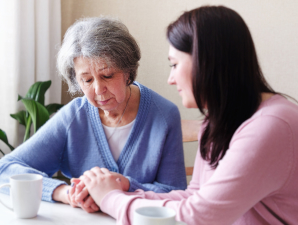


Reference:
Pacella RE, Nation A, Mathews B, Scott JG, Higgins DJ, Haslam DM, Dunne MP, Finkelhor D, Meinck F, Erskine HE, Thomas HJ, Malacova E, Lawrence DM, Monks C. Child maltreatment and health service utilisation: findings from the Australian Child Maltreatment Study. Med J Aust 2023; 218 (6 Suppl): S40-S46.
https://doi.org/10.5694/mja2.51892.Methodological Approach
The Australian child maltreatment study is the first nationally representative study of the child maltreatment and its outcomes conducted in Australia.
We used a rigorous scientific approach, built on prior
work, and extensively tested our instrument.

What we assessed:

5 types of child maltreatment
- Physical abuse
- Sexual abuse
- Emotional abuse
- Neglect
- Exposure to domestic violence

4 mental health disorders
- Major depressive disorder
- Post-traumatic stress disorder
- Generalised anxiety disorder
- Alcohol use disorder

Health Risk Behaviours
- Tobacco use
- Binge drinking
- Obesity
- Self-harm
- Suicide attempts

Health service
- Mental health hospitalisations
- Physical health hospitalisations
- GP consultations
- Psychologist consultations
- Psychiatrist consultations
- Mental health nurse consultations
Also assessed: Health service use, adverse childhood experiences, bullying, corporal punishment, intimate partner violence, criminal justice involvement, chronic health conditions and more.
References:
Haslam DM, Lawrence D, Mathews B, et al. Methodology of the Australian Child Maltreatment Study (ACMS): A national survey of the prevalence of child maltreatment and its correlates. Med J Aust 2023; 218 (6 Suppl): S5-S12.
https://doi.org/10.5694/mja2.51869.References:
Haslam DM, Lawrence D, Mathews B, et al. Methodology of the Australian Child Maltreatment Study (ACMS): A national survey of the prevalence of child maltreatment and its correlates. Med J Aust 2023;218 (6 Suppl): S5-S12.
Mathews B, Pacella R, Scott JG, et al. The prevalence of child maltreatment in Australia: findings from a national survey. Medical Journal of Australia. Medical Journal of Australia. Med J Aust 2023; 218 (6 Suppl): S13-S18.
Higgins DJ, Mathews B, Pacella R, et al. The prevalence and nature of multi-type child maltreatment in Australia. Med J Aust 2023; 218 (6 Suppl): S19-S25.
Scott JG, Malacova E, Mathews B, et al. The association between child maltreatment and mental disorders
in the Australian Child Maltreatment Study. Med J Aust 2023; 218 (6 Suppl): S26-S33.
Lawrence D, Hunt A, Mathews B, et al. Association between child maltreatment and health risk
behaviours and conditions throughout life: The Australian Child Maltreatment Study. Med J Aust 2023; 218 (6 Suppl): S34-S39.
Pacella RE, Nation A, Mathews B, et al. Child maltreatment and health service utilisation: findings from the
Australian Child Maltreatment Study. Med J Aust 2023; 218 (6 Suppl): S40-S46.